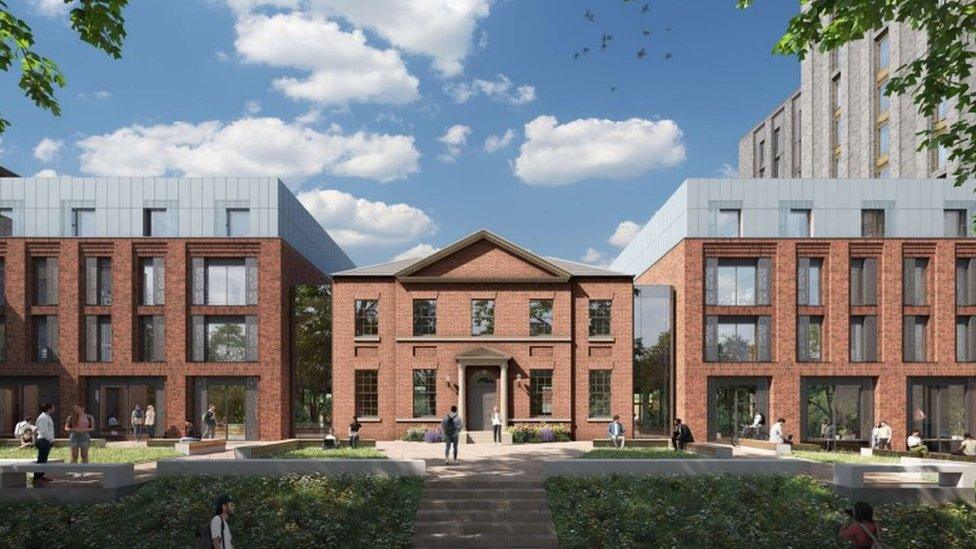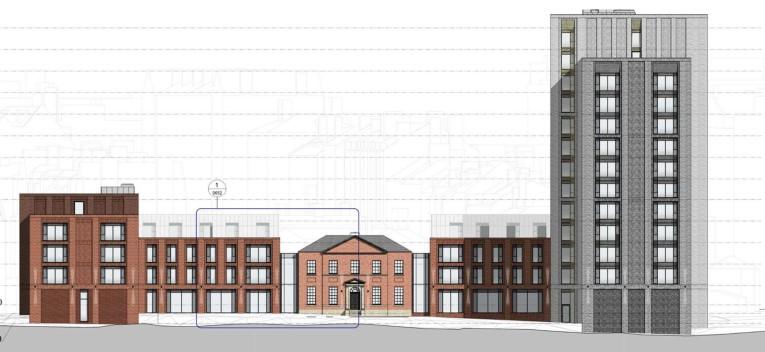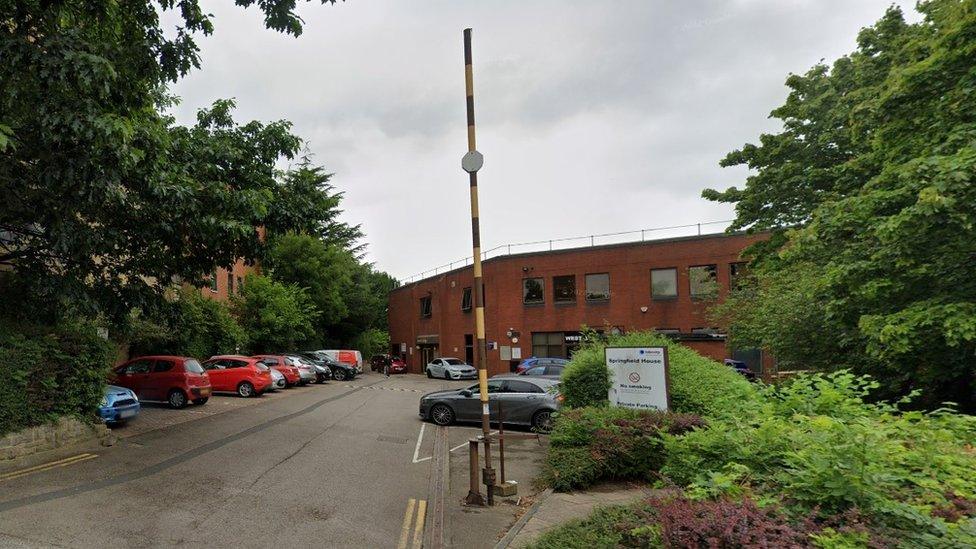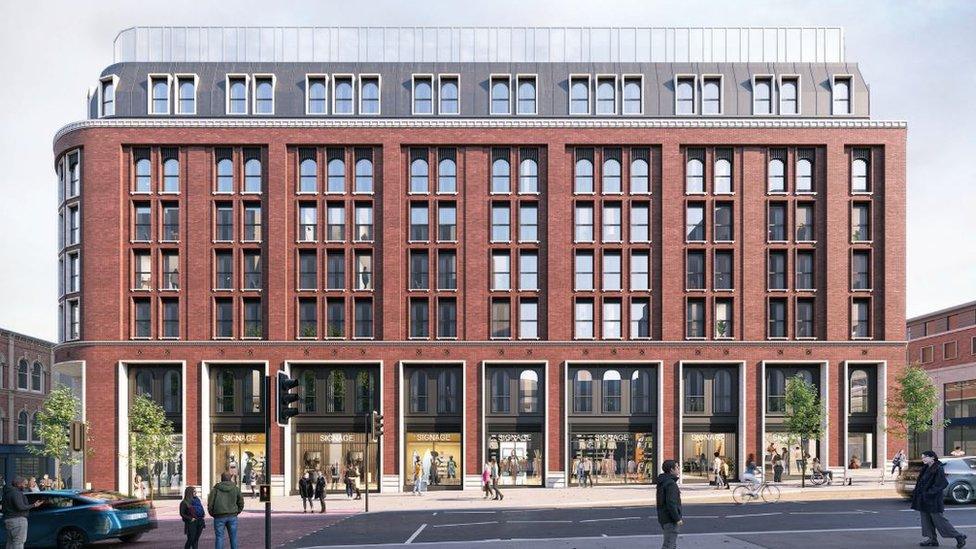Student housing plan for 18th Century Leeds manor house approved
- Published

The accommodation would include 194 cluster flat bedrooms and 140 studio flats
A grade II-listed building in Leeds is set to be turned into student accommodation despite concerns over its impact on a conservation area.
Springfield House, a former 18th Century mansion house in Woodhouse, is to be converted to house 334 students.
Historic England and other heritage groups objected while concerns over privacy were raised by a nearby venue.
The proposal, external will now go the council's chief planning officer then the government for final approval.
Plans by developer McLaren include demolishing existing wings to make way for two new ones of between four and 13 storeys.
Leeds City Council was told the new wings would sit on either side of Springfield House, with a taller extension at one end.

The redeveloped site would include two new storeys, between four and 13 floors high
Historic England, a statutory consultee, raised concerns the extensions would be "taller than the listed building and will dominate it in terms of scale".
Other objections included Leeds Civic Trust and Little Woodhouse Community Association, which flagged concerns about noise, traffic problems and a loss of privacy.
Nearby pub venue the Faversham also objected, saying the flats would overlook wedding receptions in its grounds.
Steven Allison, who runs the venue, told the council's plans panel: "This is a serious threat to our business. The impact from that intrusiveness is going to be disastrous, we believe."
However, council planning officers said they did not believe there was a negative impact on the neighbouring site, according to the Local Democracy Reporting Service.

Springfield House has been used as offices since 1982
Springfield House was built in 1792 by the cloth-dresser Thomas Livesey on a field called Well Close.
From 1865 it was owned by the Roman Catholic Diocese, which built a seminary on the stie that was knocked down in 1971.
The original building was grade II-listed in 1963 but fell into disrepair and was boarded up in the late 1970s. It became offices in 1982 and was used as a clinical research facility from 1987.
Because of Historic England's statutory objection, the scheme has been referred to the Secretary of State for final approval.

Follow BBC Yorkshire on Facebook, external, X (formerly Twitter), external and Instagram, external. Send your story ideas to yorkslincs.news@bbc.co.uk, external.
Related topics
- Published11 March 2024

- Published24 February 2023
